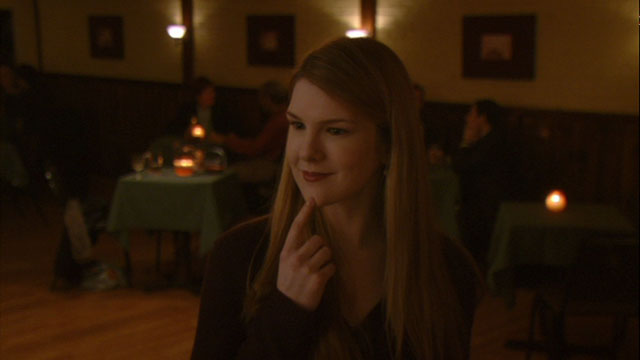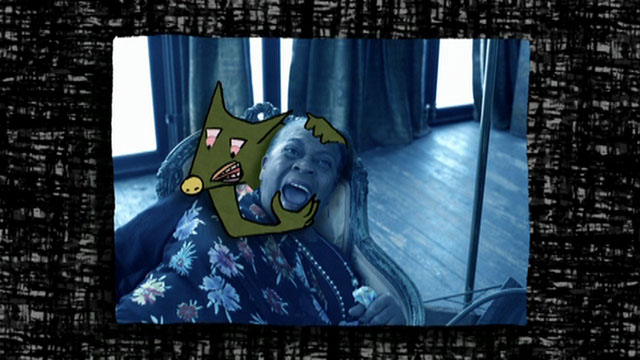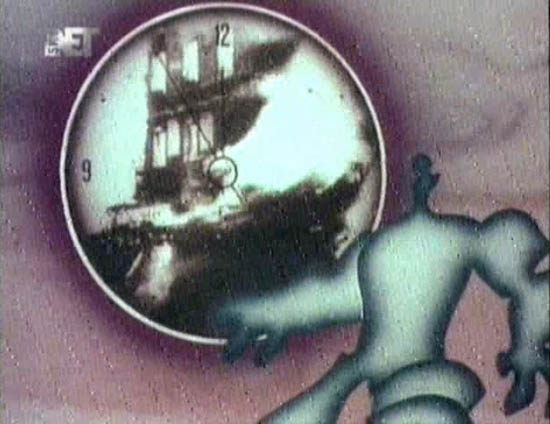Our first time at Film Streams in Omaha, which is playing great stuff (Celine & Julie, Je t’aime, je t’aime, Boyhood, the Nick Cave movie) and is located right next to the Saddle Creek shop and the club where The New Pornographers are playing. This was a groovy screening of finely restored Hubley shorts, which looked just brilliant. Katy enjoyed half of them, dozed during the others.
Covered in a post last year:
The Hat, Eggs, The Adventures of *, Moonbird and Urbanissimo
Of Men and Demons (1969)
Man starts to build himself a nice place to live and hunt and work and play, and demons of fire, water and lightning mess it all up. So he teams up with a woman, builds a stronger base with whole manufacturing plants, and the demons find ways to turn his work against him. It ends (either hopefully or ominously, depending on your outlook) with computer technology being the new invention. Some animation by Omaha-born Art Babbitt, creator of Goofy. This lost the oscar to It’s Tough to Be a Bird by John’s former Disney coworker Ward Kimball.
The Tender Game (1958)
Lovely little love story, flower girl meets a gardener. Wordless and slightly abstract, set to an Ella Fitzgerald song, more like a painted music video than anything else here. Some wild techniques – I love the scratchy static as surface motion on the lake.

Windy Day (1968)
Young Emily and younger Georgia are attempting to put on a play with a knight and princess, but Georgia keeps breaking character, asking questions, and changing their characters into kangaroos. Lost the oscar to Winnie the Pooh and the Blustery Day.
Last time I was in love with both The Hat and Moonbird – funny how those are the two I complained about this time, saying The Hat was too rambling and Windy Day outdoes Moonbird in every way.
This seemed like a good time to check out the Hubley DVD that came with an issue of The Believer.
A Date With Dizzy (1958)
Real crackly soundtrack on this one. Ridiculous plot, not brilliantly acted, in which Dizzy Gillespie and his band are being asked to score a TV ad for a fake product (“instant rope ladder”). We see a pencil test for that, plus three completed-looking ads for real products, and hear some good mini-songs by the band, with the dialogue scenes the filler between.

Cockaboody (1973)
Like an indoor, bedtime version of Windy Day. This was made years later but the girls seem about the same age, so I’m guessing the sound recordings for both movies were made the same year. Best part is when Georgia is upset, which the animation shows by having a grey storm start in her belly and form into wild animals jumping through her mouth as she screams. Katy tells me this all sounded obnoxious from the other room.


The Hole (1962)
The original improvised-dialogue Dizzy Gillespie short, predating The Hat, this time with Dizzy and George Mathews as construction workers talking about the big issues, fate and accidents, with a nuclear twist ending. Unlike The Hat and Moonbird, this one seemed better than I remembered it. Maybe it’s about how long I wait between viewings. Animators are Gary Mooney (from Lady and the Tramp and Sleeping Beauty to Four Rooms and Jurassic Park) and Bill Littlejohn (from the Parrotville series in the 1930’s to all the Charlie Brown specials, The Phantom Tollbooth and Watership Down.

The disc includes five more advertisements that weren’t in Date With Dizzy. Best is the very short Sanforized piece, but also notable is the three-minute short about what pretentious know-it-alls PBS watchers can be. What ever happened to “flavor maker” dog food sauce?

Plus home movies and photographs and behind-the-scenes footage for Cockaboody. Real cool DVD, can’t believe it came free with a magazine.








































































